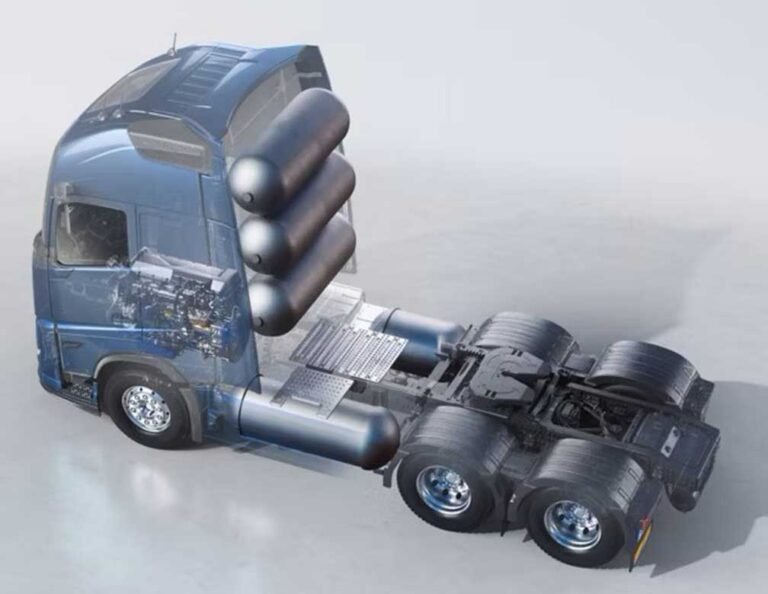Electric vehicle technology continues to advance, and batteries are proving to be effective at powering the family car for a trip to work and back or a run to the supermarket. However, as trips get longer and the technology is applied to larger vehicles, such as Class 8 trucks that haul heavy cargo across the continent, batteries simply can’t get the job done.
According to the Engine Technology Forum, the key to meeting clean air standards worldwide may well be the tried-and-true internal combustion engine (ICE).
However, the fuels burned in those engines need to change — and hydrogen could prove to be the most viable solution.
According to a whitepaper published by the Forum and written by Dr. Ameya Joshi vice president/product at ClearFlame Engine Technologies, hydrogen engines have numerous advantages over alternatives including no carbon or soot emissions, a simplified after-treatment system, less fuel weight than carrying batteries and a similar range as diesel or gasoline engines. Hydrogen also provides for faster refueling than battery charging.
Use of hydrogen also does not depend upon the extraction of rare-earth elements that must be imported.
“The key challenges for successful deployment of H2 engines are the availability of cheap, abundant fuel, infrastructure to support the transport and refueling, and the development of engine technology to meet tough pollutant standards,” Joshi said.
A July 24 webinar sponsored by the Engine Technology Forum attracted attendees from Asia, Europe and North America as well as U.S. senators and congresspersons, numerous state agencies and representatives from universities, trade associations and the media. In addition to Joshi, the panel included representatives from Cummins, Tenneco, MobilityNotes, Johnson Matthey and more.
Allen Schaeffer, executive director of the Engine Technology Forum, moderated the event, during which the panel discussed advantages of using hydrogen to power vehicles — as well as the challenges involved.
Cummins has been working on fuel agnostic engines for years and is heavily involved in developing hydrogen systems. Jim Nebergall, general manager of hydrogen engine business at Cummins, points out that “serious strategy in multiple energy sources will be required to truly decarbonize.” ICEs will be part of the solution to decarbonization, he says, but notes that there will not be one single solution.
Hydrogen can be used to power both ICEs and electric fuel cells.
According to Nebergall, the technology to use hydrogen to power long-haul vehicles can be ready for the mass market within a few years, but it all depends on the infrastructure being in place to produce, transport and store the needed hydrogen.
That’s a problem.
Hydrogen needs electricity to produce energy, either through heating water for steam for methane reforming or through electrolysis, which is simply passing an electrical current through water.
When that electricity is produced by the burning of fossil fuels such as coal or natural gas, “gray” hydrogen is the result. The emissions given off in the production stage of these products offset any advantage gained by burning the hydrogen.
“Blue” hydrogen results from the same process, but carbon capture and storage methods reduce the overall emissions from production.
To create “green” hydrogen, solar, wind or other renewable energy must be used. As of 2023, less than 1% of hydrogen production could be considered low-carbon.
Additionally, there are different grades of hydrogen. In steam methane reforming, some carbon is present in the final product. This “commercial grade” hydrogen can be burned in engines but isn’t pure enough for use in fuel cells.
Still, while battery electric technology is still evolving, ICEs have been around for over 100 years. Louise Arnold, global light-duty product line director for Johnson Matthey, has been working on emissions solutions for years.
“Clean hydrogen — we see it playing a critical role in that low carbon future, particularly in those areas where it’s gonna be quite difficult to otherwise decarbonize,” she said.
Arnold addressed the question of how hydrogen engines could be adopted quickly.
“The other great thing about hydrogen is, it can almost be a drop-in for the current,” she explained. “It can be used in a very similar way that we currently use diesel. The great thing about a hydrogen combustion engine is that it can use any grade of hydrogen.”
Johnson Matthey produces platinum type catalysts used in catalytic converters in automobiles and other applications. Arnold is helping develop aftertreatment systems for hydrogen engines.
Dmitri Konson, vice president of engineering at Tenneco, explained why his company sees hydrogen as a part of future mobility.
“We see it as the most pragmatic near-future step,” he said. “For a relatively modest incremental investment in technology, hydrogen can deliver a substantial reduction in CO2 and other pollutant emissions. It’s an affordable solution.”
Schaeffer spoke about the availability of hydrogen as a fuel.
“I think we all understand that there’s considerable development needed to expand the availability of hydrogen as a fuel,” he said. “The inflation Reduction Act provided about $8 billion in funding assistance to drive development of hydrogen hubs throughout the US. I think that’ll play a key role in making the availability to fuel, something that the internal combustion engine users can take advantage of.”
If the hydrogen burned in ICEs isn’t pure, aftertreatments will be needed to cleanse pollutants from the exhaust. Although hydrogen contains no nitrogen, NOx will still be produced. That’s because the air used for combustion is about 78% nitrogen, which could be converted in the reaction. So, hydrogen ICE vehicles may still have some of the same emissions equipment that modern diesel engines are equipped with.
While battery electric vehicles (BEVs) may prove to be an effective solution for medium-duty vehicles used locally or regionally, longer-range applications like commercial trucking will need a different power source if diesel fuel is to be phased out as a fuel. Natural gas has proven to be effective and can reduce emissions, but hydrogen gets the industry closer to zero emissions using technology that is mostly ready now.
The supply issue is the problem with hydrogen. By the time the issue is solved, advancements in battery technology may outpace other solutions. Until then, hydrogen remains a potential replacement for diesel.
In the meantime, emissions mandates from the Environmental Protection Agency continue to flummox many players in the trucking industry.
Click here to read more from The Trucker about the advancement of hydrogen-powered trucks.
Cliff Abbott is an experienced commercial vehicle driver and owner-operator who still holds a CDL in his home state of Alabama. In nearly 40 years in trucking, he’s been an instructor and trainer and has managed safety and recruiting operations for several carriers. Having never lost his love of the road, Cliff has written a book and hundreds of songs and has been writing for The Trucker for more than a decade.














